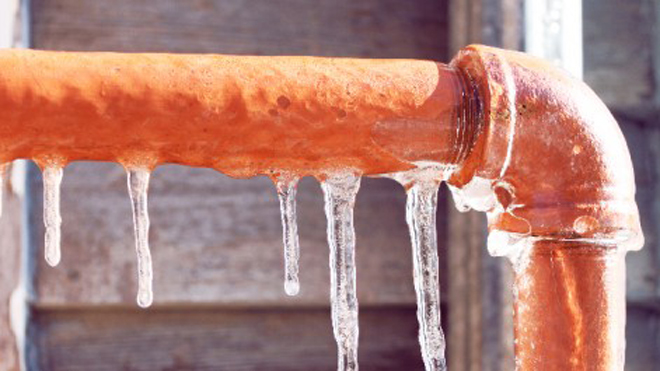We've uncovered this post on Winter Plumbing Precautions: Preventing Frozen Pipes below on the web and reckoned it made sense to discuss it with you here.

Cold weather can ruin your plumbing, especially by freezing pipelines. Here's just how to prevent it from happening and what to do if it does.
Intro
As temperature levels drop, the risk of frozen pipes boosts, potentially resulting in expensive repair services and water damages. Comprehending exactly how to prevent frozen pipelines is important for homeowners in chilly environments.
Prevention Tips
Protecting vulnerable pipelines
Cover pipelines in insulation sleeves or use heat tape to protect them from freezing temperatures. Focus on pipes in unheated or exterior areas of the home.
Home heating strategies
Maintain interior rooms adequately heated up, particularly locations with plumbing. Open cabinet doors to permit cozy air to distribute around pipelines under sinks.
Exactly how to identify icy pipes
Seek decreased water circulation from faucets, uncommon smells or sounds from pipes, and visible frost on exposed pipes.
Long-Term Solutions
Architectural modifications
Consider rerouting pipelines far from outside wall surfaces or unheated locations. Add added insulation to attic rooms, cellars, and crawl spaces.
Upgrading insulation
Purchase top quality insulation for pipelines, attics, and walls. Appropriate insulation assists maintain constant temperature levels and minimizes the threat of icy pipes.
Protecting Outside Plumbing
Garden pipes and outdoor faucets
Disconnect and drain pipes yard hose pipes before winter. Install frost-proof faucets or cover outside faucets with shielded caps.
Recognizing Frozen Pipes
What causes pipelines to freeze?
Pipelines freeze when subjected to temperature levels listed below 32 ° F (0 ° C) for prolonged periods. As water inside the pipes ices up, it broadens, taxing the pipe walls and possibly creating them to burst.
Dangers and problems
Frozen pipelines can bring about water disturbances, building damage, and costly fixings. Ruptured pipelines can flooding homes and create extensive structural damage.
Indications of Frozen Pipes
Recognizing icy pipelines early can stop them from breaking.
What to Do If Your Pipelines Freeze
Immediate activities to take
If you presume icy pipes, keep taps open up to soothe stress as the ice thaws. Utilize a hairdryer or towels soaked in warm water to thaw pipes slowly.
Verdict
Protecting against frozen pipes needs proactive actions and fast responses. By recognizing the causes, indicators, and preventive measures, homeowners can shield their pipes during winter.
5 Ways to Prevent Frozen Pipes
Drain Outdoor Faucets and Disconnect Hoses
First, close the shut-off valve that controls the flow of water in the pipe to your outdoor faucet. Then, head outside to disconnect and drain your hose and open the outdoor faucet to allow the water to completely drain out of the line. Turn off the faucet when done. Finally, head back to the shut-off valve and drain the remaining water inside the pipe into a bucket or container. Additionally, if you have a home irrigation system, you should consider hiring an expert to clear the system of water each year.
Insulate Pipes
One of the best and most cost-effective methods for preventing frozen water pipes is to wrap your pipes with insulation. This is especially important for areas in your home that aren’t exposed to heat, such as an attic. We suggest using foam sleeves, which can typically be found at your local hardware store.
Keep Heat Running at 65
Your pipes are located inside your walls, and the temperature there is much colder than the rest of the house. To prevent your pipes from freezing, The Insurance Information Institute suggests that you keep your home heated to at least 65 degrees, even when traveling. You may want to invest in smart devices that can keep an eye on the temperature in your home while you’re away.
Leave Water Dripping
Moving water — even a small trickle — can prevent ice from forming inside your pipes. When freezing temps are imminent, start a drip of water from all faucets that serve exposed pipes. Leaving a few faucets running will also help relieve pressure inside the pipes and help prevent a rupture if the water inside freezes.
Open Cupboard Doors
Warm your kitchen and bathroom pipes by opening cupboards and vanities. You should also leave your interior doors ajar to help warm air circulate evenly throughout your home.

We hope you enjoyed our excerpt about How to Prevent Your Pipes From Freezing. Thanks a ton for taking time to read through our article post. Enjoyed reading our blog? Please share it. Let another person check it out. We cherish your readership.
Quote & Schedule